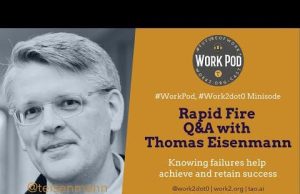In the labyrinth of government corridors, where public funds meet private sector efficiency, a complex dance unfolds. This dance is governed by the meticulous rules of contracting and procurement, a system that ostensibly promises fairness, efficiency, and economic prudence in public work. Yet, beneath the surface of this procedural tango lies a web of ‘invisible handcuffs’ – subtle but powerful constraints that shape the very core of government operations.
The evolution of these policies has been far from stagnant. In the past decades, we’ve witnessed an ebb and flow of regulations, each set out to enhance the integrity and effectiveness of the procurement process. However, as with any regulatory change, unintended consequences often emerge. Some claim that stringent procurement rules have led to a more bureaucratic and less dynamic work environment within the government sector, inadvertently stifling innovation and progress.
Comparing international benchmarks reveals a diverse spectrum of approaches. From the meticulous German Vergaberecht to the agile procurement strategies of Singapore, there are lessons to be gleaned. These varied systems shine a light on the struggle to strike a delicate balance: how do we maintain fiscal responsibility while ensuring quality service?
The impact on workers in the public sector is profound. Policies dictate not just how contracts are awarded, but also how work is performed, evaluated, and valued. These rules and regulations create workplace norms and expectations that can either empower public servants or constrain them in invisible handcuffs. They set the stage for how public missions are fulfilled and public funds are expended.
But transparency and accountability remain at the heart of the matter. As taxpayers demand greater insight into how their money is spent, we must ask ourselves: Are current practices adequately transparent? Are we holding contractors to the highest ethical standards?
Private enterprises play a crucial role in fulfilling public missions – but at what point does the reliance on the private sector blur the lines of accountability? In dissecting case studies from defense contracting to infrastructure projects, we uncover patterns of dependency that raise important ethical questions.
What can be done to loosen these invisible handcuffs? Experts advocate for everything from streamlining procurement processes to enhancing whistleblower protections. Others call for a paradigm shift in how we perceive the interplay between the private and public sectors, urging a redefinition of partnerships that prioritize shared value over profit margins.
As we thread through the complexities of government contracting and procurement, we must not lose sight of the ultimate goal: an efficient, ethical, and effective public workforce. The path forward is complex, but it is one we must navigate with open eyes and a willingness to challenge the status quo. Join us on this journey as we explore the intricate world of government contracting and procurement, seeking solutions to promote not just a more effective government workforce environment, but a more ethical public sphere as well.
Will you join us in reimagining these invisible handcuffs, or will you watch from the sidelines as the silent constraints tighten? The choice is yours, and the time for action is now.

























